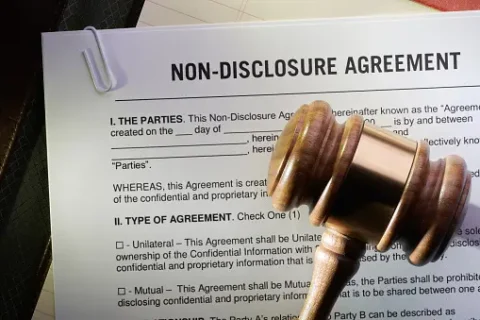Photo by Parker Coffman on Unsplash
The state of Indiana is famous for its mesmerizing landscapes and its busy cities as well. This perfect balance between traditional and modern has led to the fact that more people are choosing to move or visit this area of the US.
Naturally, that resulted in the need for better transportation infrastructure and safer roads. The state of Indiana is dealing with the growing number of vehicles on the road and as the number of commuters also rises, the risk of accidents is also higher. Busy intersections and roads can easily become hotspots for accidents.
However, for Indiana native drivers who aren’t used to this kind of traffic, there are a couple of tips you can follow to avoid falling victim to any road accidents. It all boils down to human error and you need to understand the importance of being a careful and cautious driver.
Understanding the factors that contribute to heavy traffic and the common types of accidents is the first step towards developing strategies to improve road safety. This post delves into why some roads in Indiana are particularly busy and also covers effective measures to avoid them.
So, if you’re a regular commuter then make sure to read through and see how you can lead by example and avoid any potential collisions and crashes.
Why the roads are busy
Currently, the state of Indiana is somewhat undergoing a transformation. The increase in tourism has been notable in the last several years, with more than 30 million visitors annually to Indianapolis alone. Add to that the number of visitors that venture to other parts of the state and you get quite a huge number. However, tourism isn’t the only reason why.
Economic activity
Indiana’s industrial and agricultural sectors get significant commercial traffic, particularly around urban centers like Indianapolis, Fort Wayne, and Gary. The transportation of goods and services adds to the congestion, especially during peak hours when the roads become really congested.
Population growth
As the number of residents rises, the number of vehicles on the roads does as well. The urbanization has caused increased daily commutes. Additionally, the fact that many people still have to travel to work also leads to busy intersections, namely during rush hours.
Infrastructure design
Some roads and intersections in Indiana were designed before the current traffic volume was anticipated. Outdated infrastructure can lead to bottlenecks and increased accident risk. This is something that can’t be fixed overnight and a plan needs to be put in place in order to build roads that can handle the ever-growing number of vehicles.
How to practice safe driving
As a driver, there are so many things you can do to ensure a safe driving experience for yourself and others as well. By adhering to several basic principles of safe driving, the increased number of vehicles in Indiana won’t affect you.
Adhere to speed limits
Probably one of the main reasons why road accidents take place is because drivers always go above the speeding limit and find it hard to obey the speed regulations. The speed limits are there for a reason and you should definitely stick to these, especially in high-traffic areas and areas that certain groups of pedestrians are frequenting (schools, pedestrian zones).
If you’re speeding, you won’t find it easy to spot threats on time and you’ll also need more time to brake and stop your vehicle safely.
Take regular breaks
The rule mainly applies to professional drivers such as semi-truck drivers whose job it is to work long shifts and transport goods. The trucking companies that employ the drivers have the responsibility of ensuring and encouraging regular breaks for the drivers.
By Indiana law, it’s important to have a 2h break after 8h of work. The fatigue that drivers experience when they don’t get that rest time is usually what causes truck accidents.
Most truck drivers are even hesitant to ask for legal support as they believe it’s solely their fault. However, when you turn to a semi-truck accident lawyer in Indiana, you may actually learn that it’s the trucking company’s fault for enforcing such tight deadlines that put the additional pressure on drivers.
That’s why it’s important to take regular breaks and get enough sleep in order to be able to have your eyes on the road at all times.
Ensure pedestrian safety
Most drivers, especially when in a hurry, completely forget to yield to those that are the parties “at risk” in traffic. By “at risk”, we mean those that are the most vulnerable like pedestrians and cyclists.
It’s important to be mindful of these pedestrians and yield to them to prevent any accidents. This is mainly important in urban zones when the frequency of pedestrians is really high.
Avoid tailgating
Another common cause of road accidents is tailgating. This is a practice many drivers have unfortunately adopted and it refers to driving really closely behind another vehicle. That means there is not enough space to stop the car safely and brake in case of an accident.
Tailgating is a bad habit and serves no purpose apart from increasing the risk of accidents, which is definitely something you want to avoid.
The final word
Hopefully, you are now more educated on how to make safe driving decisions that will help you deal with the increased traffic in Indiana currently. As the state is witnessing a surge in the number of vehicles and commuters, you as the driver, also need to be aware of these changes and adapt your driving style.
That means driving with more caution and adhering to the speed limit. Also, for professional drivers, taking regular breaks is necessary to avoid distractions and fatigue. And remember that regular breaks are not a perk but a right you have as an employee, so make sure to seek legal support if you feel like your employer is not following the regulation.
Finally, by avoiding bad driving practices such as tailgating, you can ensure that you have more time to react and stop the vehicle safely in case of an emergency.
By sticking to these basic yet very useful tips, you’re setting a good example for other drivers in your surrounding but are also ensuring that no accidents are caused by your fault.

Daniel J. Morgan is the founder of Invidiata Magazine, a premier publication showcasing luxury living, arts, and culture. With a passion for excellence, Daniel has established the magazine as a beacon of sophistication and refinement, captivating discerning audiences worldwide.





